Setting off from Pier Approach on Bournemouth’s seafront we decided to take a circular walk along to the suburb of Boscombe. It was to be a pier to pier walk plus a little more besides. From Bournemouth Pier we set off in an easterly direction along the lower promenade which is known as the Undercliff. This well maintained, blue flag sandy beach has a reputation for being one of the cleanest along this section of the Dorset coast with its fine, pale coloured sand sloping gently into the sea. The bay benefits from its own micro-climate and the weather is often better than inland.
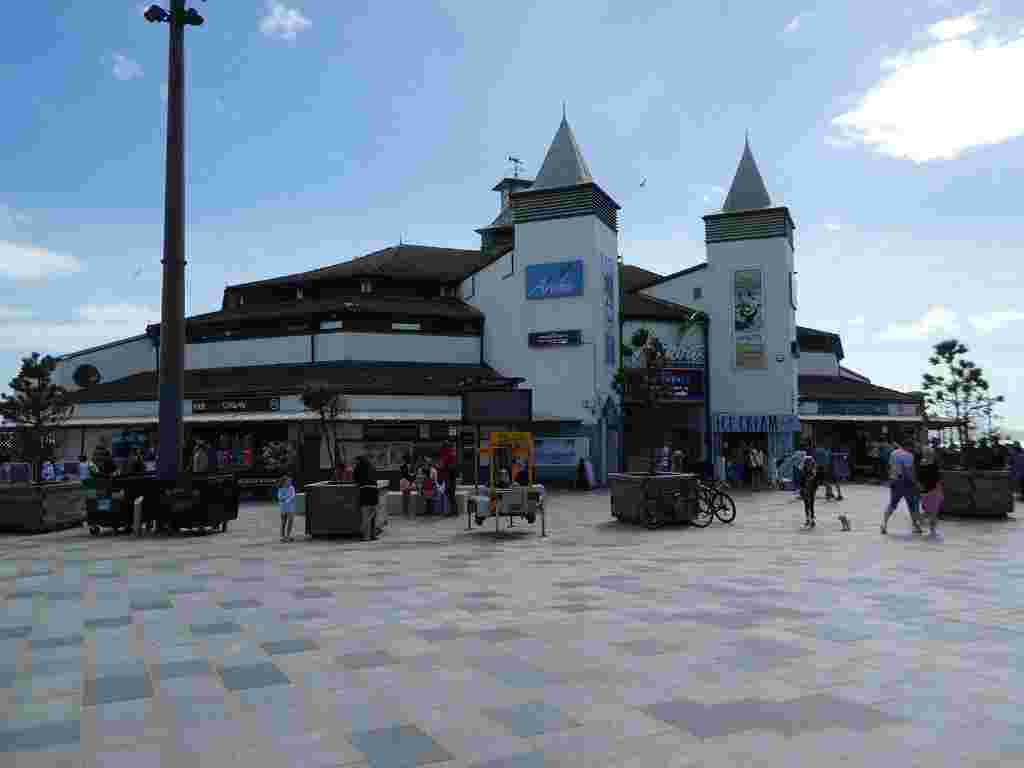
Although reasonably bright, we’d actually picked a very windy day for our stroll as the fine sand was whipping up from the beach across our path as we walked. Not to be deterred we pressed on passing rows of brightly coloured beach huts, some privately owned but most available for hire from the council. I liked the way they had been painted forming a rainbow of shades as we passed by. Beach huts date back to Victorian times and it’s so nice to see that the tradition continues to this day even though they can’t be slept in overnight and do not have running water.
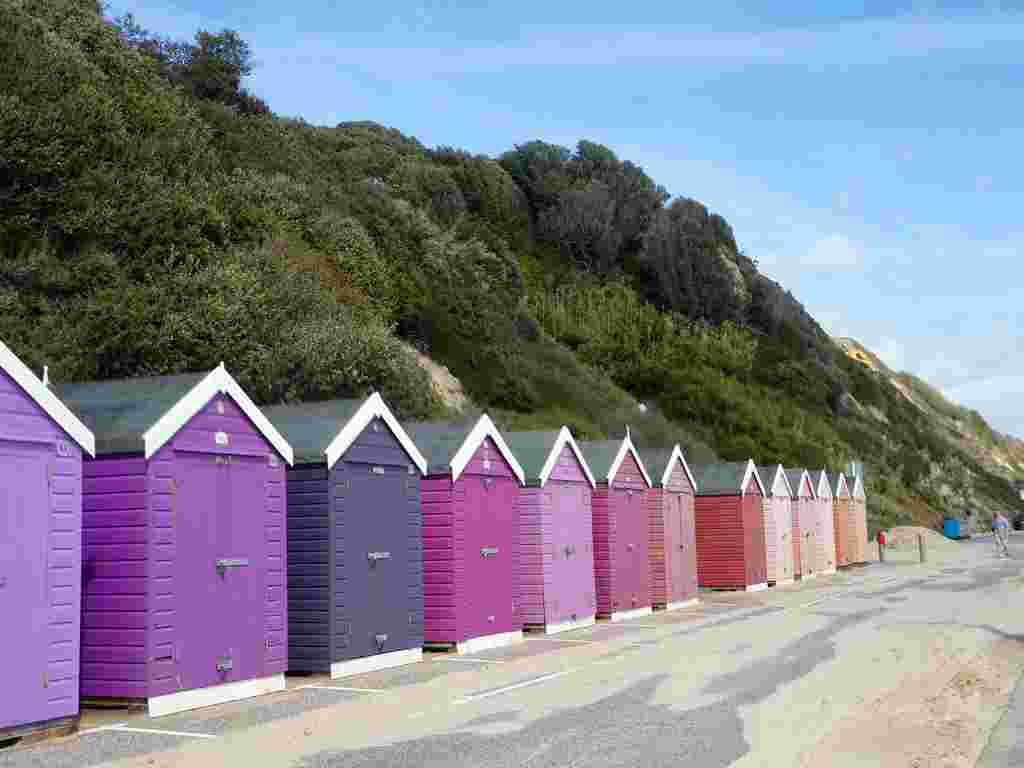
The blustery conditions had not stopped families from enjoying a day on the beach and although it was reasonably busy around the pier, if people had made the effort to walk slightly further, they could have enjoyed a wide expanse of sand to themselves.
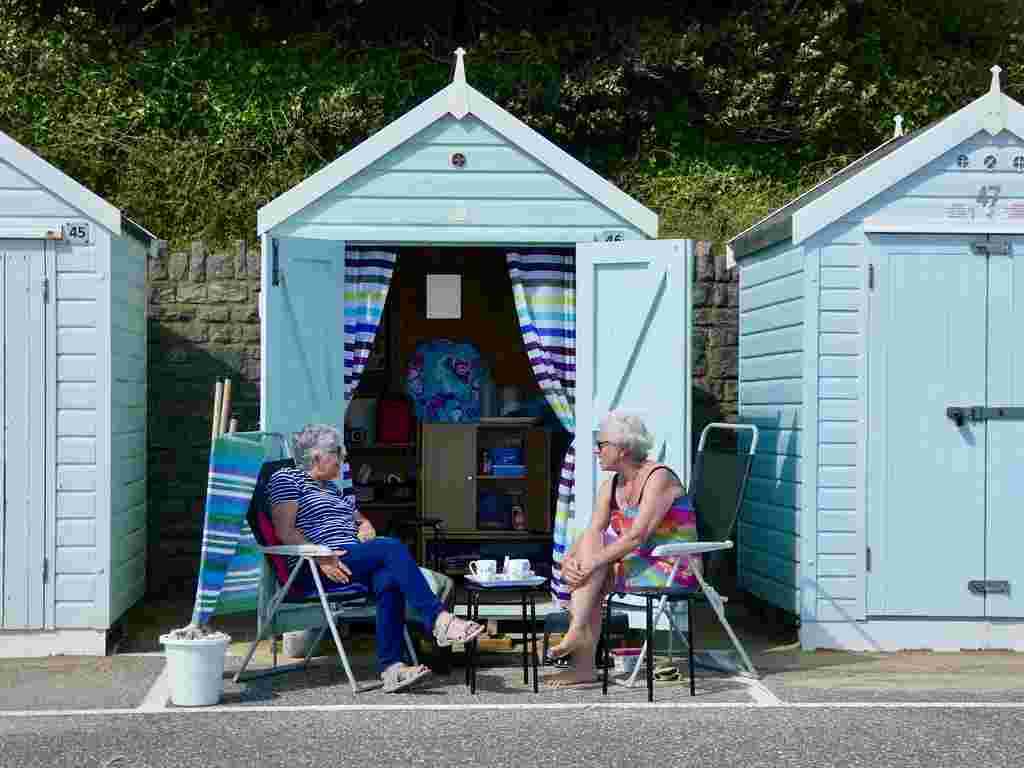
Four cruise ships belonging to P & O and Cunard could be seen moored out in the bay. A sad sign of the times with cruises being cancelled for the foreseeable future. Southampton, the cruise capital of Europe lies close by and with all of the ships out of service there are insufficient berths to accommodate them all in port so some are having to drop anchor and shelter in Bournemouth bay. I was surprised to discover that an entrepreneurial tour boat company were operating evening cruises from Poole Quay, taking those interested on a close up tour of these ships for £15 per person.
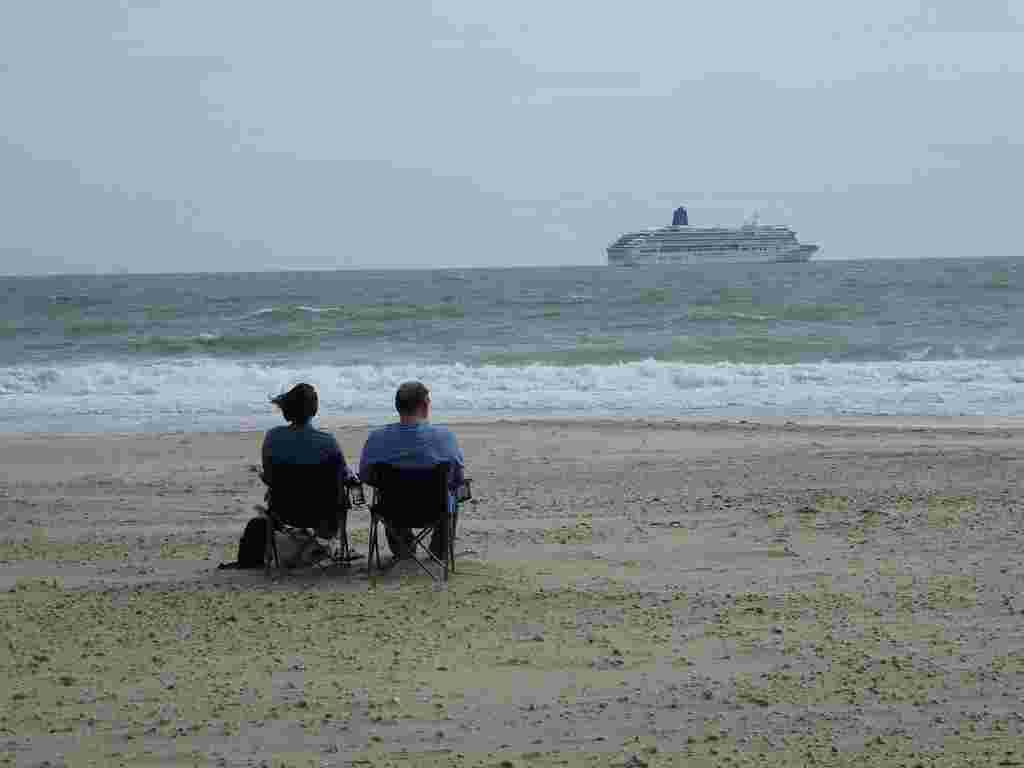
Returning to our walk, it was not long before we had reached the site of the East Cliff lift which ceased to operate when a section of the cliff fell away in 2016. The landslip demolished a cafe and undermined the Edwardian cliff lift structure rendering it unsafe. It used to transport visitors up and down the cliff and was especially useful for those with mobility problems but it has still not been repaired.
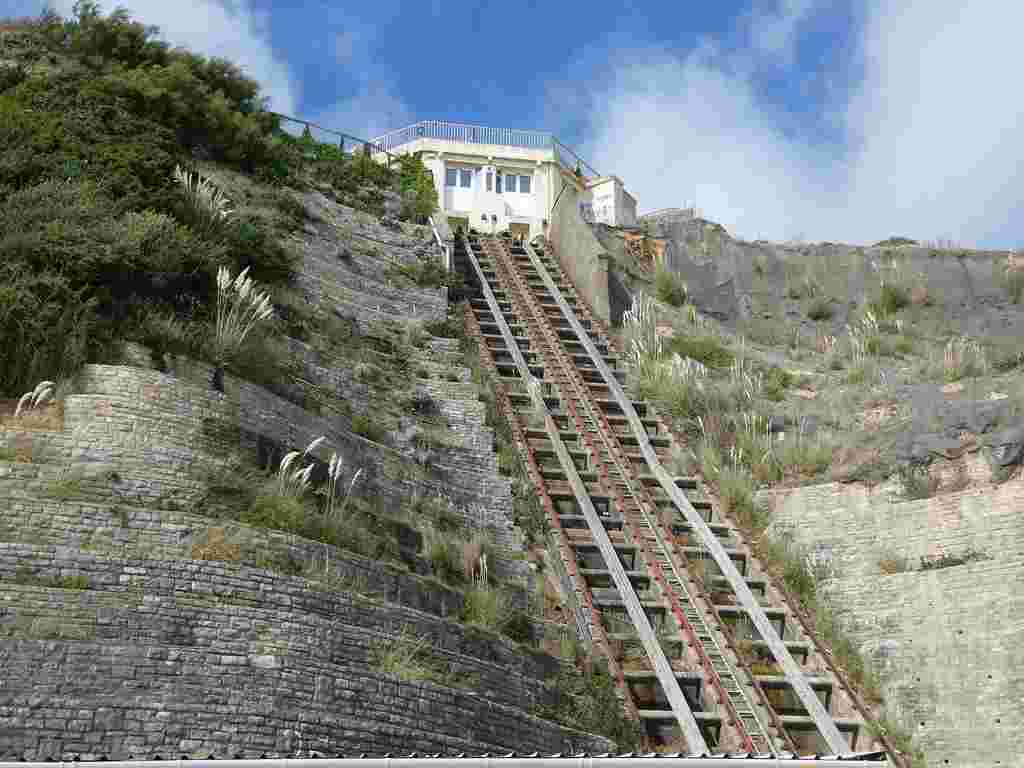
It took approximately 30 minutes to arrive at Boscombe Pier where we enjoyed a stroll out to sea along its wooden deck. The 600ft pier first opened in 1889 and has witnessed many alterations during its long life. A modernist entrance way was added in the 1950’s and more recently, in 2008 the derelict and unsafe building at the end of the pier was demolished and replaced by a simple viewing and fishing platform. The rest of the pier was also restored and in 2010 Boscombe Pier was awarded the accolade of Pier of the Year.
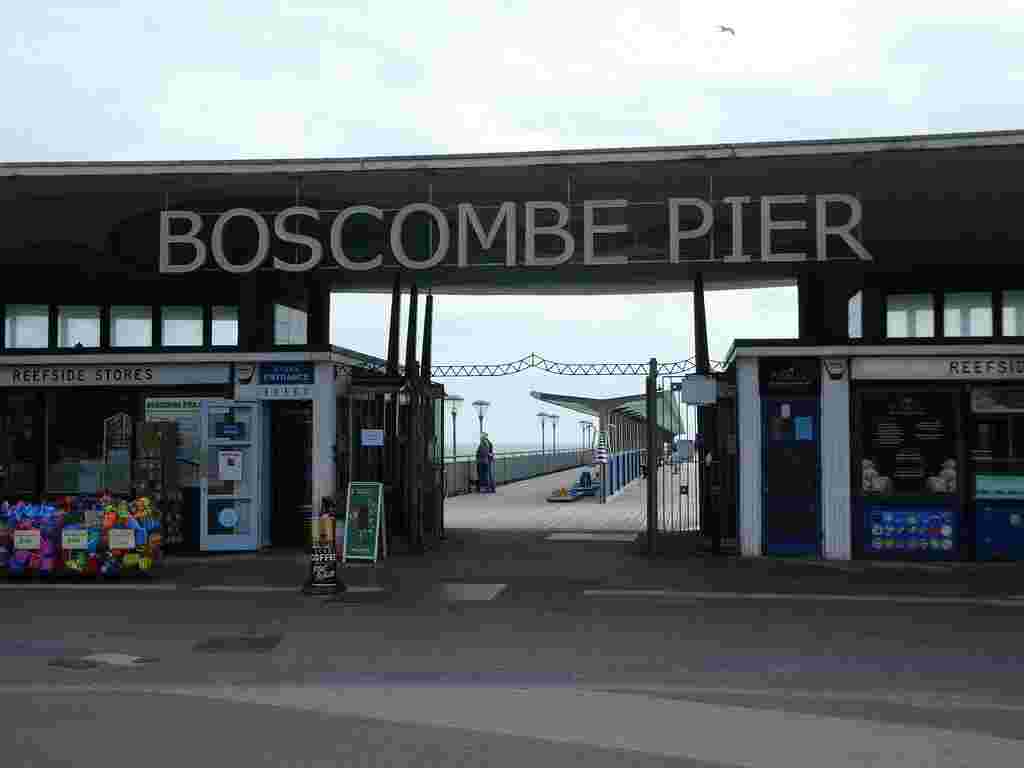
Two activities can be found along the length of the pier, the first Percussion Play is completely free and consists of a range of musical instruments fashioned from aluminium. These include a xylophone, tubular bell chimes and a drum. It was good to see these still in use in the COVID-19 era with cleaning wipes available by each instrument. I couldn’t resist following the xylophone notes and tried to play the traditional tune ‘I do love to be beside the seaside’. My rendition was a little on the slow side but otherwise reasonable.

The second pier activity is completely different and features the UK’s first ever eco-friendly mini golf course. The specially made golf balls contain fish food and with the 18th hole being located at the end of the pier, it has been made bottomless to allow the balls to fall into the sea and disintegrate. Unusual to say the least!
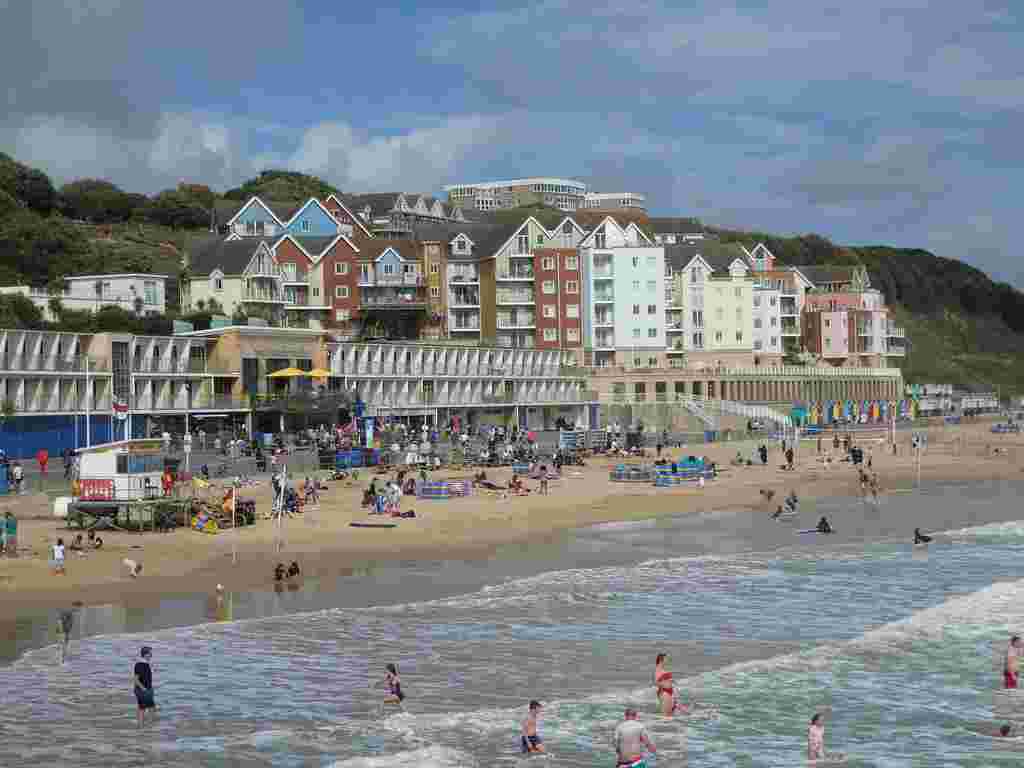
The nicest part of the pier for me was strolling along its boardwalk and enjoying the stunning views both looking back along the East Cliff and from the other side of the pier to Boscombe with glimpses of the Isle of Wight in the distance.
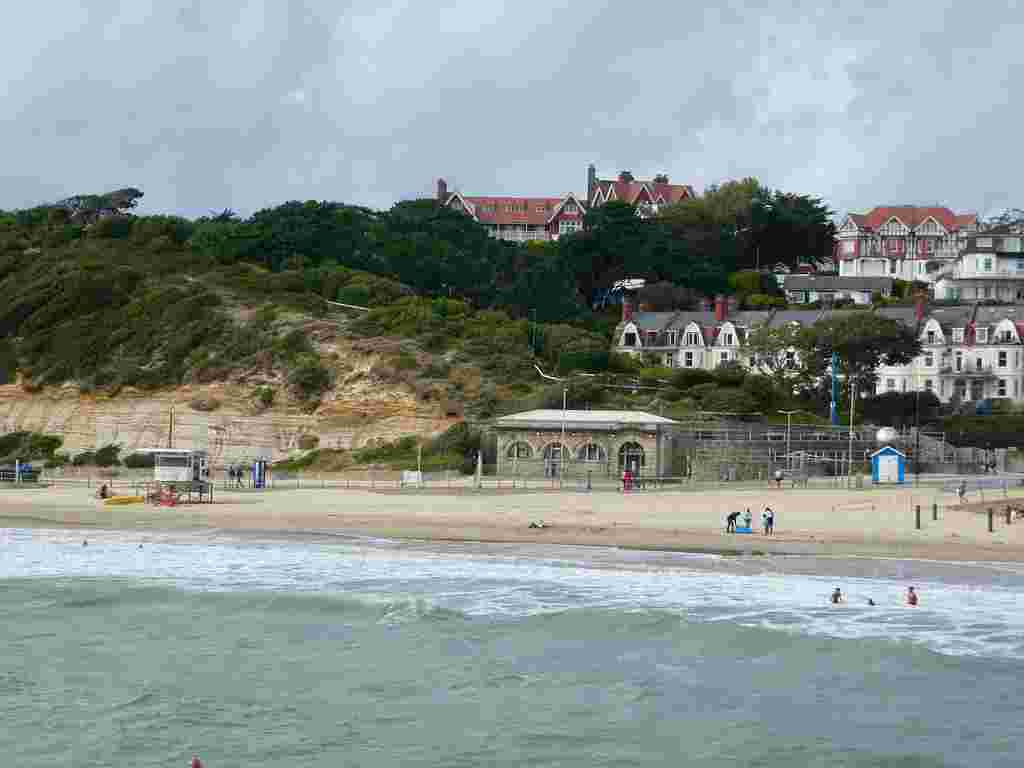
From the pier we continued slightly further along Boscombe seafront which has been brought up-to-date with the addition of new beachside restaurants and cafes. We found a table sheltered from the wind on the terrace of Urban Beach where we relaxed sipping cappuccinos whilst enjoying the views across the English Channel.
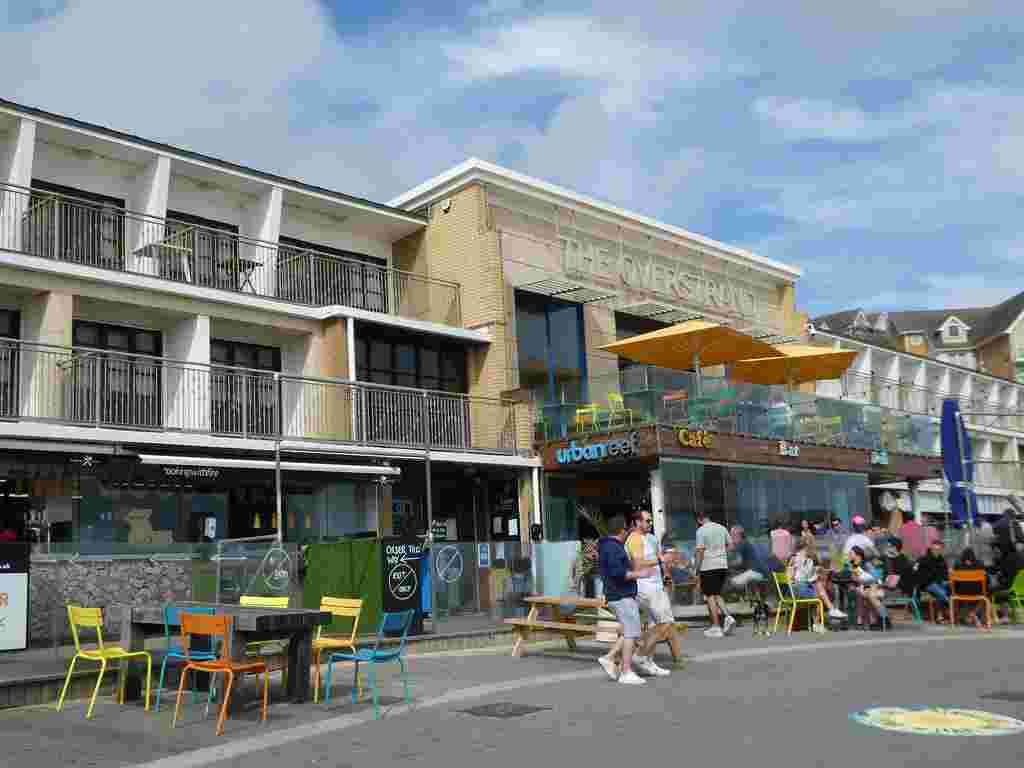
The seafront was redeveloped to coincide with the construction of an artificial surf reef which was designed to enhance surfing conditions. It was made from 55 giant sandbags to encourage large waves but never worked properly. It did however help to regenerate Boscombe’s seafront so there was an element of success.

After finishing our coffees, we retraced our steps back to Boscombe Pier and followed signs to its town centre along Sea Road. The town is a good ten minute walk inland from the beach but is interesting to visit for its architecture.
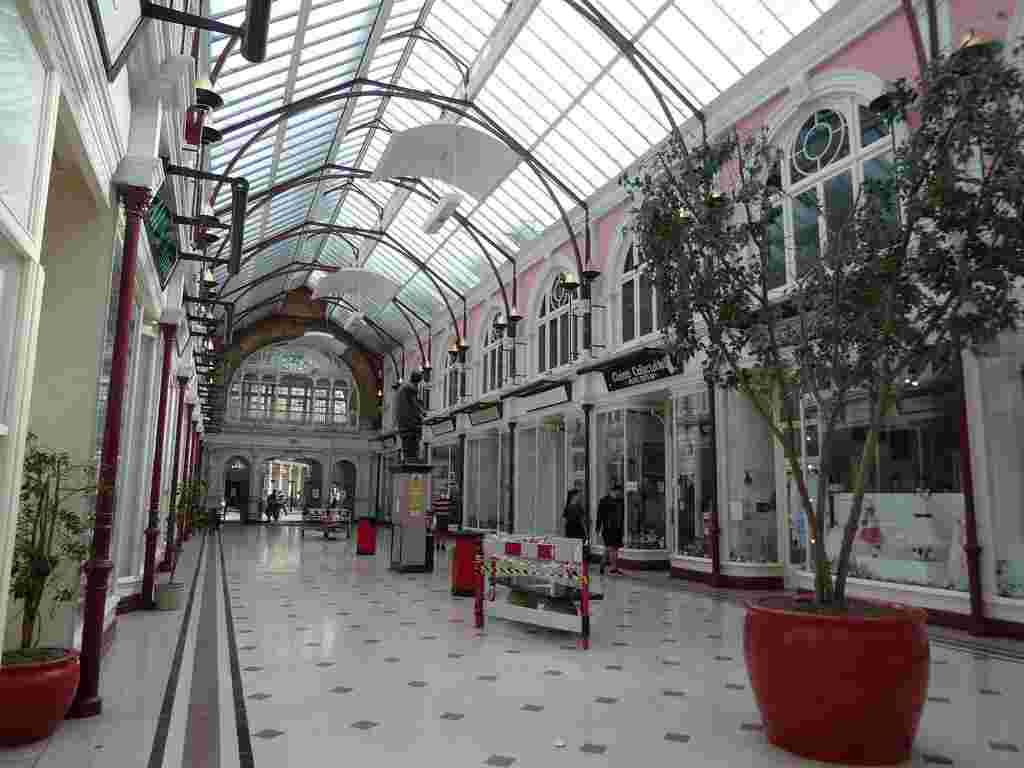
The Royal Arcade retains its Victorian elegance and is a pleasure to stroll through. It’s just a sad reflection of the times that many of its independent shops and boutiques have now disappeared. The arcade leads through to the mundane Sovereign Centre which contains supermarkets and everyday shopping needs. Boscombe high street is pedestrianised and markets take place along there each Thursday and Saturday selling fresh local produce, clothing, jewellery and bric-a-brac. There are also several food trucks offering a variety of street food options. Our visit was late on a Saturday afternoon and some of the stalls were just packing up as we passed by.
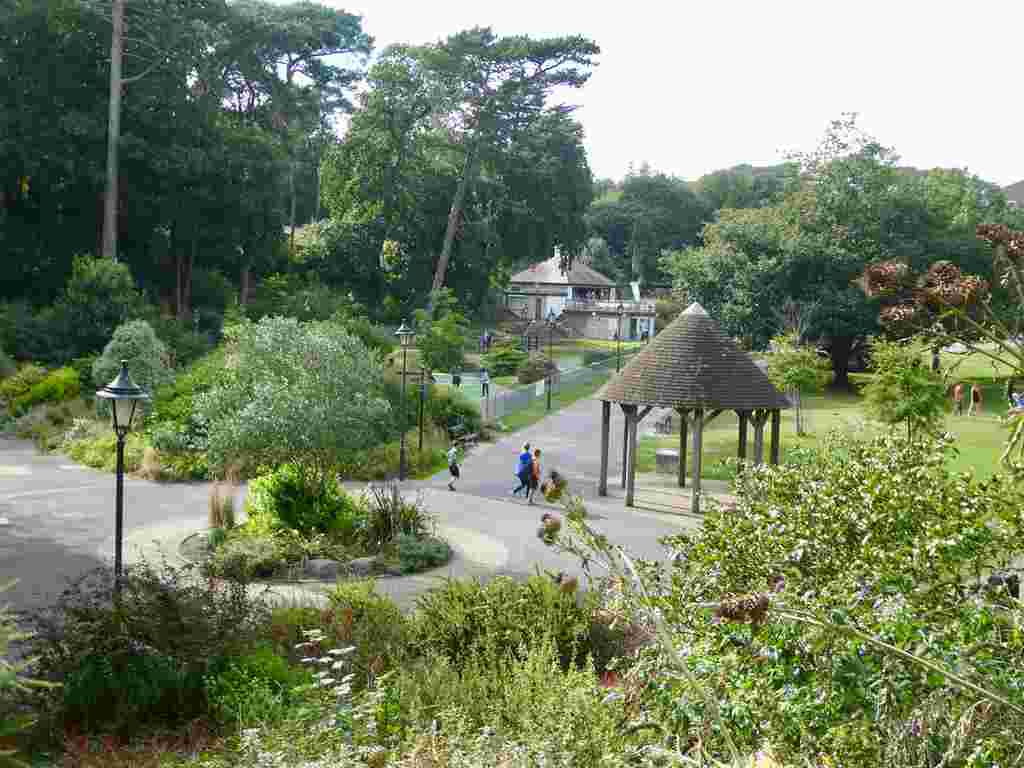
There was nothing that particularly took our attention in the town so we did an about turn and wandered back along the road, continuing as far as the Boscombe Chine Gardens to the west of the centre. The gardens feature formal flower beds, woodland walks, a mini golf course and a water themed children’s playground. On an incline near the park entrance stands the Squirrel Cafe with an attractive terrace overlooking the gardens. The park was originally developed from a chine of heath into Victorian pleasure gardens and connects to the Boscombe Overcliff Nature Reserve. The cliffs support over 300 plants including some rare species that survive on the dry, sandy soil.
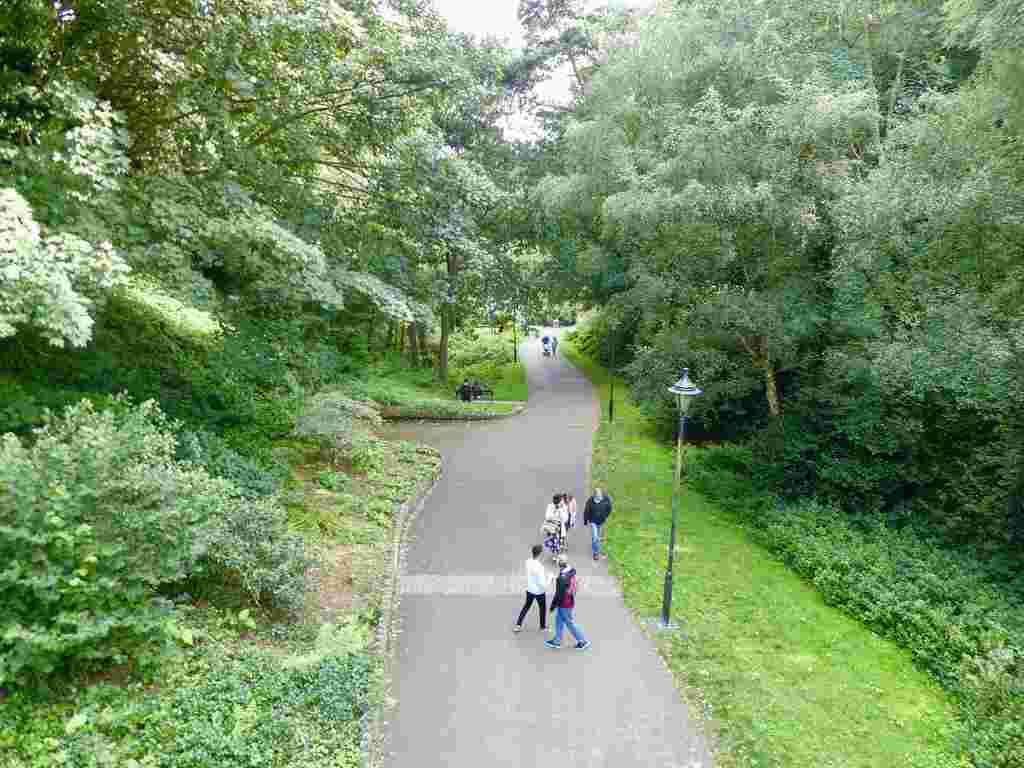
There’s a wildlife quiz trail along the pathways about all the plants and animals found in the gardens and I couldn’t resist lifting up the wooden boards as I went along to find if I had answered the questions correctly.
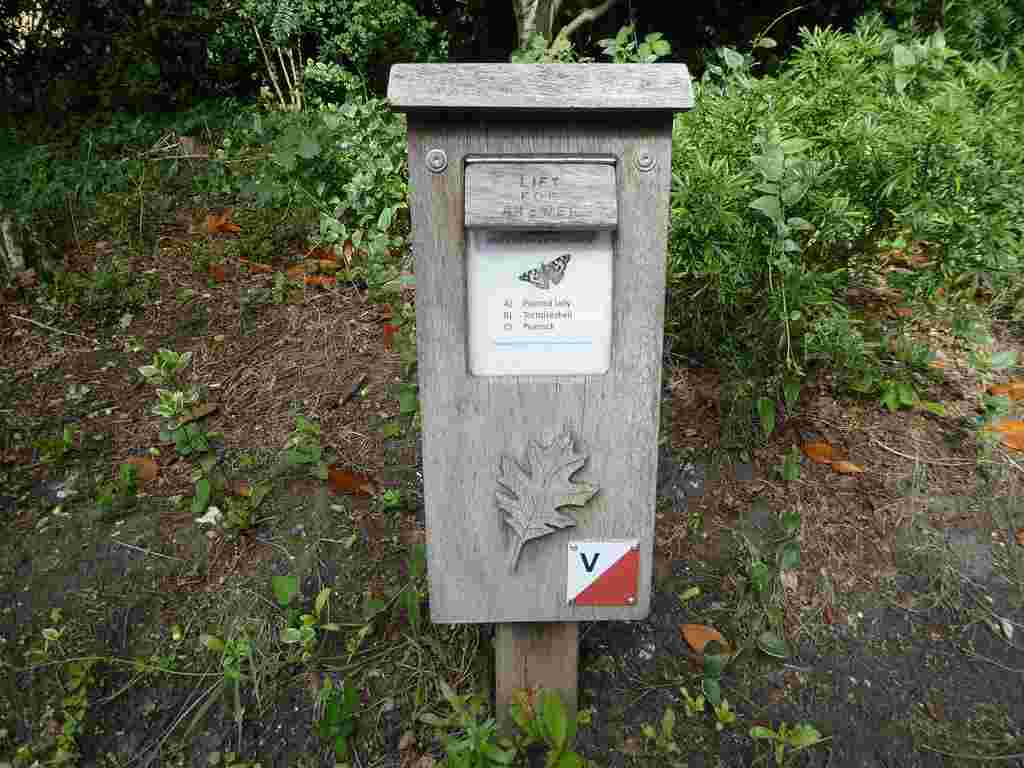
Walking back towards Bournemouth, this time along the clifftop there was another surprise in store for us as we came across a small herd of feral goats. Since 2009, goats have been introduced to help control non-native plants that are taking over the cliffs at the expense of natural heathland.
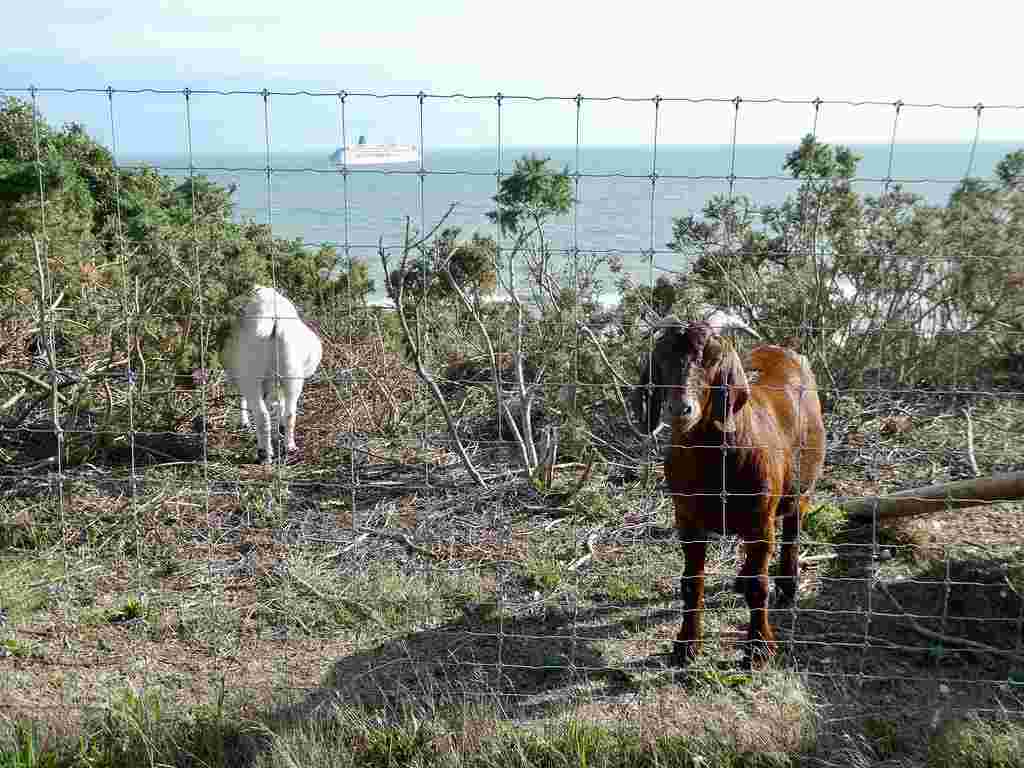
A chicken wire fence has been installed with a dual purpose of keeping the goats penned in and to stop people climbing onto the dangerous cliffs. The recent addition of the fence has received mixed reactions as it partially obstructs the delightful views across the bay.
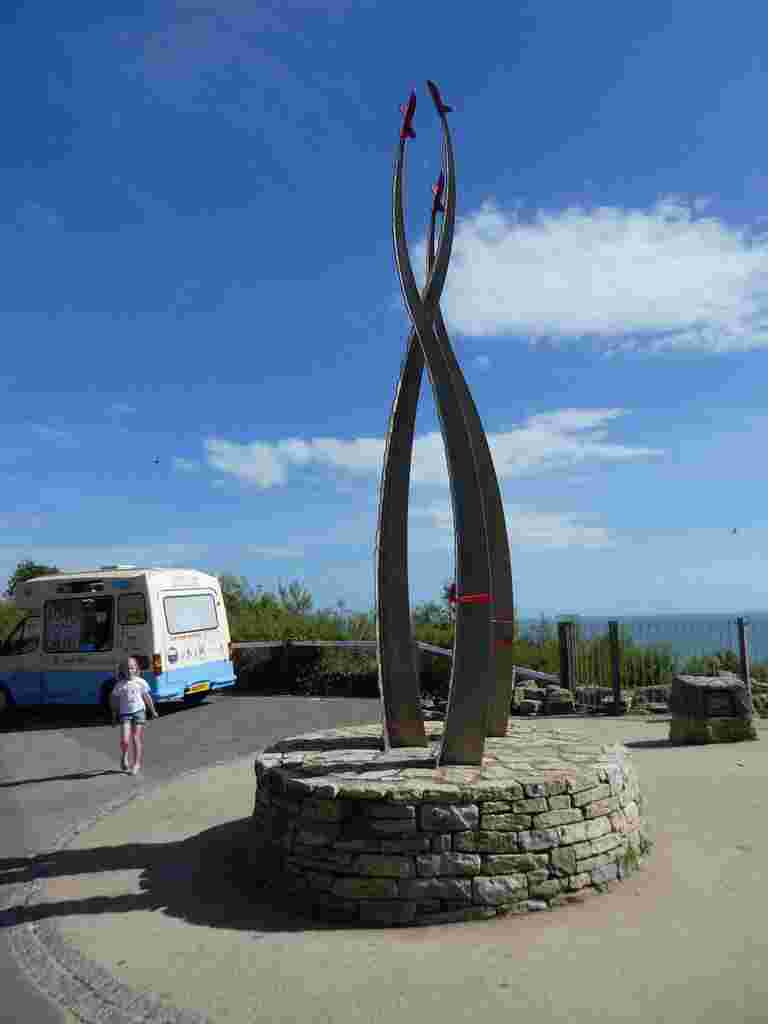
Nearing the centre of town, perched at the top of the East Cliff zig-zag path is the Jon Egging Red Arrows Memorial to a pilot who died after performing in the Bournemouth Air Show in August 2011. We had actually attended the event on this tragic day and marvelled at the skills of the Red Arrow team. Sadly Flt. Lt. Jon Egging died when his Hawk T1 aircraft crashed on his return to Bournemouth airport. The 5m high artwork features three glass Red Arrow planes with stainless steel contrails.
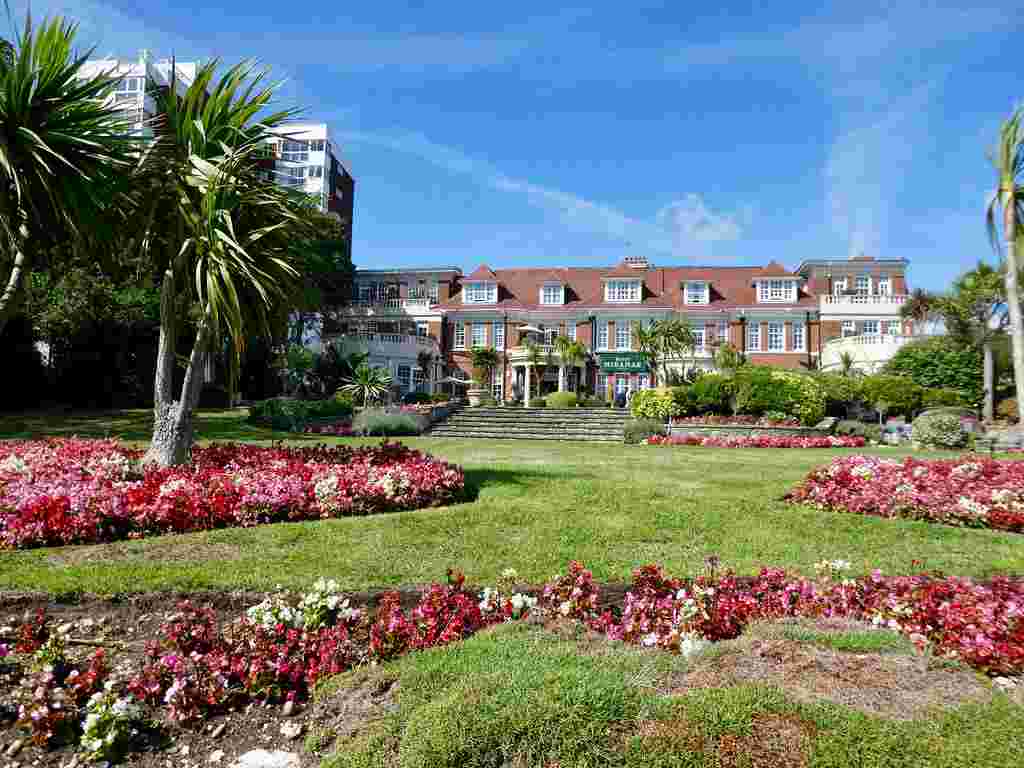
All the way along the seafront facing the sea are numerous large hotels some of them with palm trees and lavish gardens that wouldn’t look out of place in the Mediterranean. Nearing the end of our walk, a slope leads back down to Bournemouth Pier where there are some stunning views across Poole Bay and a beautiful cliff top villa.
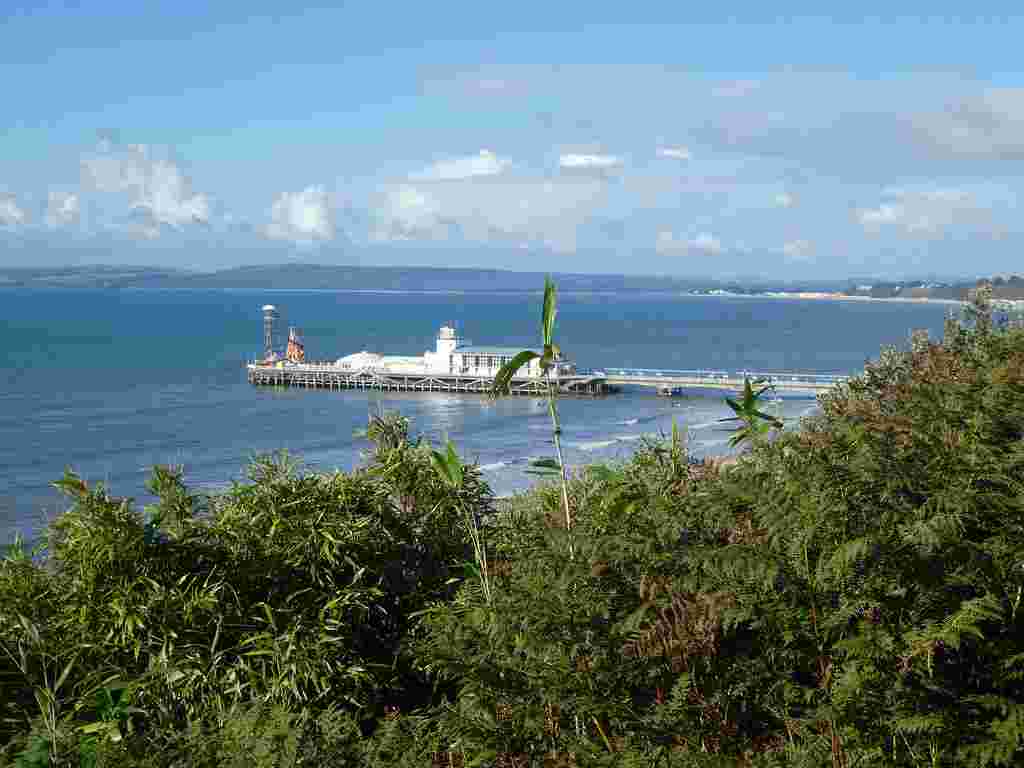
The villa was once a family home and is now the Russell Cotes Art Gallery & Museum. The villa was constructed in 1910 and the owners filled it with works of art and souvenirs collected on their overseas travels. It’s now open to the public and contains a gift shop and cafe. The museum’s walled gardens are an oasis of calm yet just steps away from the hustle and bustle of the beach.
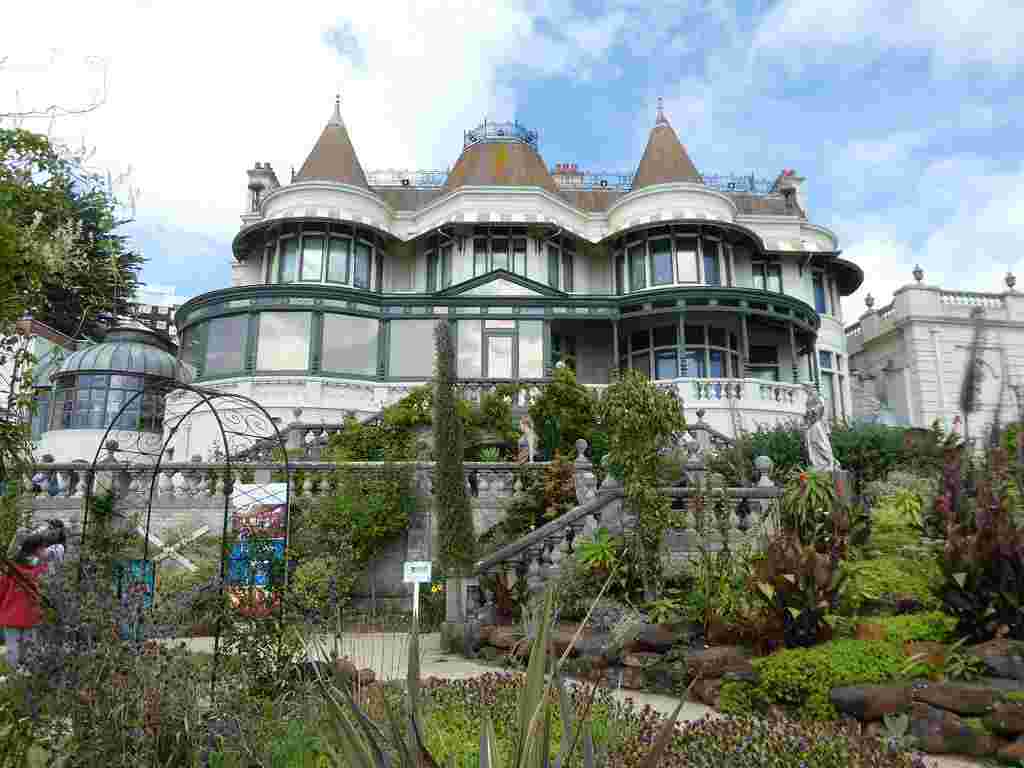
Finally, after completing our four mile circular walk we had returned to our starting point at Bournemouth’s Pier Approach having encountered cruise ships, goats, bio-degradable golf balls and percussion instruments, not to mention a stunning coastline! It’s a very easy walk, mostly level with just one or two sloping sections.
If you have enjoyed reading this post you may also like:
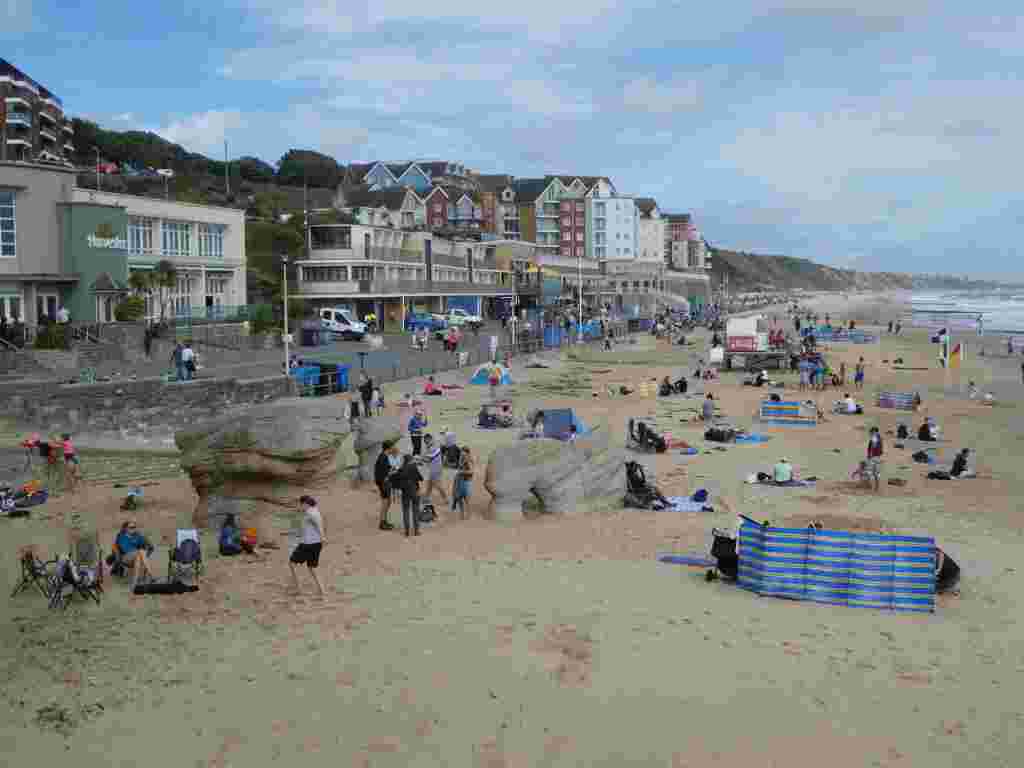

Leave a comment